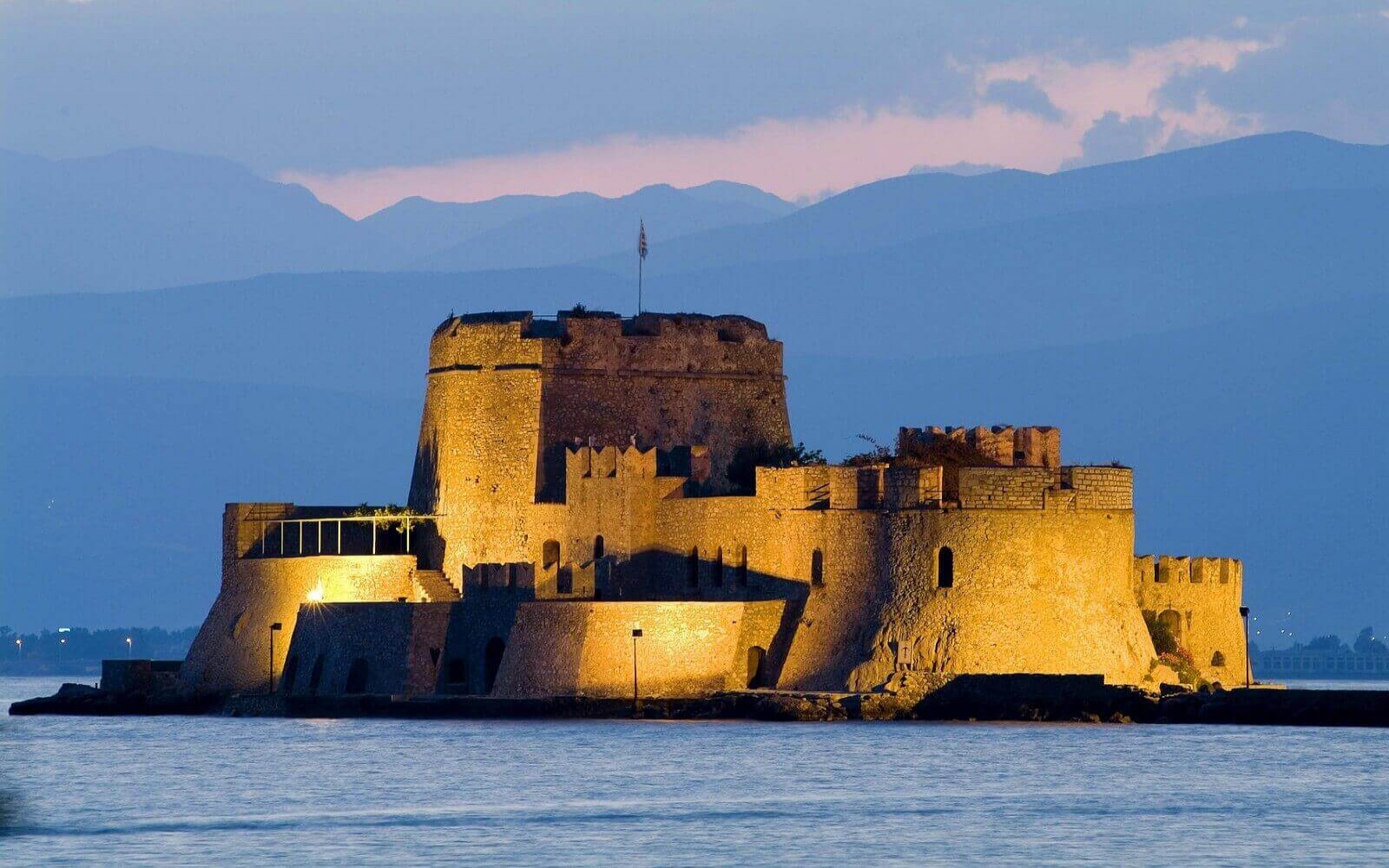Nafplio
Nafplio is undoubtedly one of the most beautiful cities in Greece and one of the country's most popular travel destinations.
It combines history, culture, and tradition with entertainment, relaxation, and the unmatched natural beauty of the region. The picturesque cobblestone streets lined with Venetian and neoclassical mansions, the statues adorning the charming squares and parks, the historic churches and Ottoman fountains, and the medieval castles together create a unique travel setting that will surely impress and enchant any visitor.
Historical Background
According to mythical tradition, mainly known from the traveler Pausanias (Corinthiaca, 38.2), Nafplio was founded by Nauplius, the renowned son of Poseidon and Amymone, daughter of Danaus, the king of Argos.
In antiquity, Nafplio served as the naval port of the Argives, which is also the source of its name. As the eminent ancient geographer Strabo stated (Geographica, Book VIII, VI, 2): "The name derives from the ships (naus) that moored here."
During Byzantine times, Nafplio was an important commercial center, and in the following centuries, it came under the control of the Franks, Venetians, and Ottomans in succession.
The city took on its present form during the First Venetian Rule, when towards the end of the 15th century, land was artificially reclaimed from the sea to form the lower town, which today corresponds to Nafplio's historic center.
During the Greek War of Independence in 1821, Nafplio was besieged three times. The first siege took place from April 4 to 10, 1821, led by Bouboulina.
On November 30, 1822, the Greeks, under Staikos Staikopoulos, secretly entered the fortress of Palamidi, leading to the surrender of the garrison on December 3, 1822.
On January 18, 1823, Nafplio was designated as the seat of the government, which settled in the city in July 1824. As a result, Nafplio became the first capital of the newly established Greek state from 1823 to 1834.
It is worth noting that Ioannis Kapodistrias, the first Governor of Greece, arrived in Nafplio on January 8, 1828.
Also noteworthy is that the first issue of the Government Gazette (Φύλλο της Εφημερίδας της Κυβερνήσεως) was printed in Nafplio on December 22, 1825.
Sights
Palamidi
Palamidi, which has majestically towered over the city for centuries, is Nafplio's most popular attraction. The famous Venetian fortress was built during the tenure of Venetian Fleet General Proveditor Augustino Sagredo, between 1711 and 1714.
During the summer, the Nafplio Festival hosts unique musical events within the castle.
Bourtzi
Like Palamidi, Bourtzi is a landmark of the city. This small Venetian fortress was built on the islet of Agioi Theodoroi in 1473 by Italian engineer Gambello. Its original name was Castello dello Soglio.
Syntagma Square
Syntagma Square, one of the most beautiful and historic squares in Europe, is home to the Vouleftiko, the first Parliament of the Greeks, which functioned during the years 1824–25 and 1827–28. The famous trial of Theodoros Kolokotronis took place in this building in 1834.
The square also hosts the Archaeological Museum of Nafplio, one of the city's most important Venetian buildings, constructed in 1713 by Augustino Sagredo as an arsenal (arsenale). It later housed the 8th Infantry Division and, until 1929, the Military Club.
The museum features a rich collection of 2,000 artifacts from Nafplia, Tiryns, Mycenae, Asini, Dendra, and Midea.
Also of interest is the fact that the square includes the house of Nikitaras and the house of Theodoros Kolokotronis.
The House of Papaflessas
The house of Papaflessas stood on the site of the neoclassical residence now located at 10 Vasileos Konstantinou Street (Great Road).
The House of Manto Mavrogenous and Demetrios Ypsilantis
Their house is located at the beginning of Papanikolaou Street, near the so-called Land Gate (Pyli tis Xiras).
The Land Gate (Pyli tis Xiras)
Beneath the imposing walls of Acronafplia stands the Land Gate, once the only entrance into the city.
Church of Saint Spyridon
This picturesque church, at the entrance of which Ioannis Kapodistrias, Greece's first Governor, was assassinated on the morning of September 27, 1831, was built in 1702. It is located at 1 Kapodistriou Street (Old Town) and remains open to the public from 10:00 a.m. to 7:00 p.m.
Church of Panagia of Nafplio
Another historically significant church is the Church of Panagia, dating to the 15th century during the First Venetian Rule.
The Armandspberg Mansion
Among the most beautiful and historically important buildings in the city is the Armandspberg Mansion, which served as the residence of Greece's regent, Count Josef Ludwig von Armansperg.
Acronafplia (Arvanitia) Promenade
Visitors can enjoy a walk along the scenic seafront cobbled path that starts at the end of the pier and leads to Arvanitia Square, offering a stunning view of the deep blue waters of the Argolic Gulf.








